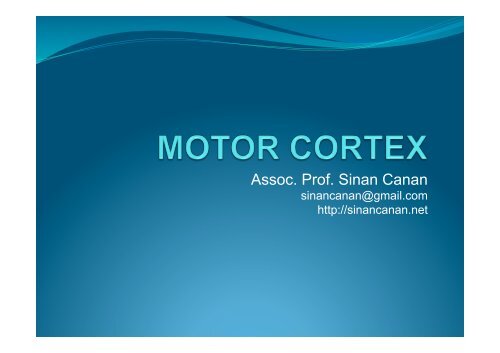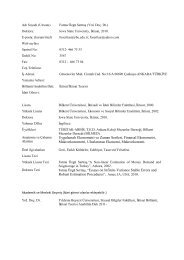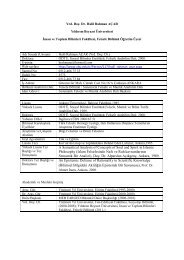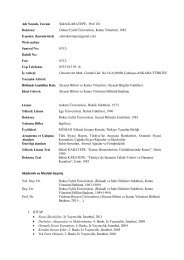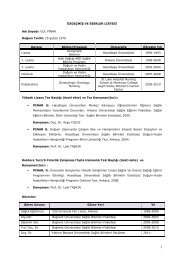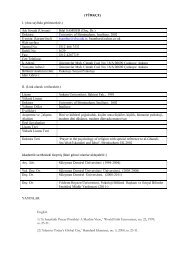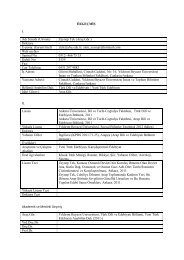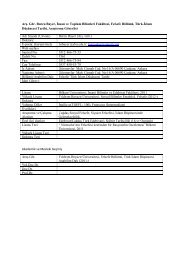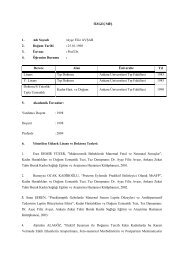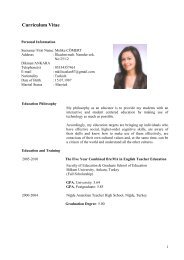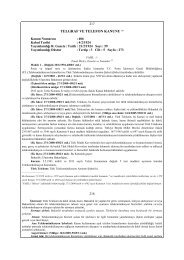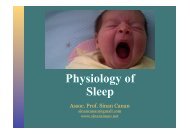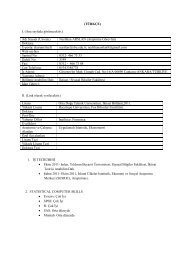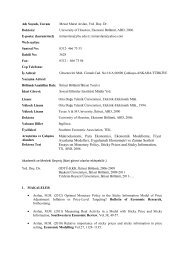Primary motor cortex
Primary motor cortex
Primary motor cortex
- No tags were found...
Create successful ePaper yourself
Turn your PDF publications into a flip-book with our unique Google optimized e-Paper software.
Assoc. Prof. Sinan Canansinancanan@gmail.comhttp://sinancanan.net
Motor Cortex Center of voluntary <strong>motor</strong>movements Located anterior to thecentral sulcus Includes; <strong>Primary</strong> <strong>motor</strong> <strong>cortex</strong> Pre<strong>motor</strong> area Supplementary <strong>motor</strong>area
Motor Cortex <strong>Primary</strong> <strong>motor</strong> <strong>cortex</strong> <strong>Primary</strong> source for the<strong>motor</strong> commands to lower<strong>motor</strong> neurons. Somatotopicalorganization “Motor homunculus” Finer muscle control –more <strong>motor</strong> units – more<strong>motor</strong> neurons – largerrepresentation areas
Motor Cortex Pre<strong>motor</strong> area Topografic organization Complex movement patterns Construction of <strong>motor</strong> image Supplementary <strong>motor</strong> area Bilateral complex movement patterns Body posture maintanence
Motor CortexF5
Mirror neuron system
Motor Cortex Cortical columns Motor patterns for synergisticmuscle groups Stimulus amplification forcontraction Dynamic and static neurons In <strong>motor</strong> <strong>cortex</strong> and Red nucleus(n. Ruber) Dynamic neurons: Building up forceat the beginning Static neurons: Maintain themovement or posture
Corticospinal tract
Motor Cortex Betz cells 3% of the pyramidaltract
Corticospinal tract Axons of corticospinal tract <strong>Primary</strong> <strong>motor</strong> <strong>cortex</strong> (30%) Pre<strong>motor</strong>&Supp. Motor areas (30%) Somatosensory areas (40%)
Other <strong>motor</strong> pathways Collaterals of Betz cells (lateral inhibition) To Basal ganglia (postural contractions) To Red nucleus (→rubrospinal tract) To Reticular system (→ reticulocerebellar tracts) To Vestibular system (→ vestibulocerebellar tracts) To Pons nuclei (→ pontocerebellar tracts) To Nuc. olivarius inferior (→ olivocerebellar tracts)
Corticospinal excitation
Sensory Feedback From muscle spindles… From tendon organs… From skin-touch receptors…
Motor Control from Brainstem “Defying gravity” Pontine reticular nuclei(spontaneous exitatory signals toantigravity muscles) Medullary reticular nuclei(strong cortical input; inhibitorysignals via medullary reticulospinaltr.) Vestibular nuclei (selectivesignals for balance) Section below the pontine level Decerebration rigidity
Lesions of the <strong>motor</strong> system <strong>Primary</strong> <strong>motor</strong> <strong>cortex</strong> lesion Paralysis… Pre<strong>motor</strong> area; Caudate nucleus lesions Loss of voluntary control of fine movements Widespread “stroke” Overexitability and spasticity
The End...


